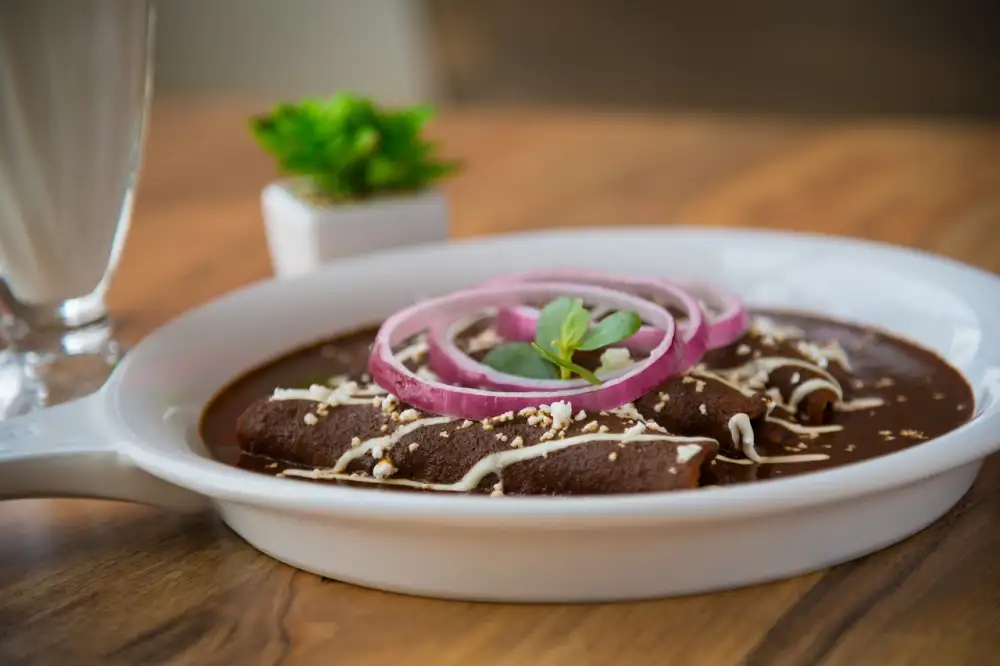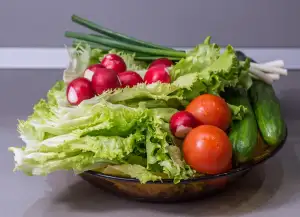Unveiling the Exquisite World of Mole Food: A Delectable Mexican Culinary Delight

Mole, a rich and flavorful sauce, is a culinary delight that originates from Mexico. Its complex blend of spices, chilies, and other ingredients creates a symphony of flavors that tantalizes the taste buds. Mole is not just a sauce; it is an art form that has been perfected over centuries. From its humble beginnings in indigenous Mexican cuisine to its status as a beloved national dish, mole has become synonymous with Mexican gastronomy. Join us on a journey as we delve into the exquisite world of mole food and discover its captivating history, diverse varieties, traditional ingredients, cooking techniques, popular dishes, health benefits, and tips for pairing it with other foods. Get ready to embark on a culinary adventure like no other!
History and Origins of Mole
Mole, a rich and complex sauce that is an integral part of Mexican cuisine, has a fascinating history and origin. The word "mole" comes from the Nahuatl word "molli," which means sauce or concoction. Mole has been enjoyed in Mexico for centuries and its origins can be traced back to pre-Hispanic times.
Legend has it that mole was created by nuns in the 17th century as a special dish to serve to the archbishop. They combined various ingredients such as chilies, nuts, seeds, spices, and chocolate to create a unique and flavorful sauce. This creation was known as "mole poblano," which is still one of the most famous varieties of mole today.
Mole quickly became popular among the aristocracy and later spread to other regions of Mexico. Each region developed its own variation of mole, incorporating local ingredients and flavors. Today, there are countless varieties of mole found throughout Mexico, each with its own distinct taste and character.
The history of mole is deeply intertwined with Mexican culture and traditions. It is often served during festive occasions such as weddings, birthdays, and religious celebrations. Mole has become a symbol of Mexican culinary heritage and is considered one of the country's national dishes.
The complexity of flavors in mole reflects the diverse influences that have shaped Mexican cuisine over time. From indigenous ingredients like corn and chili peppers to Spanish introductions like almonds and cinnamon, mole represents a fusion of cultures that have left their mark on Mexican gastronomy.
Whether you prefer the smoky heat of mole negro or the fruity sweetness of mole coloradito, exploring the history and origins of mole will deepen your appreciation for this beloved Mexican culinary delight.
Varieties of Mole Sauce
Mole sauce is a complex and richly flavored sauce that comes in various varieties. Each type of mole has its own unique combination of ingredients, giving it a distinct taste and texture. Some popular varieties include:
1. Mole Poblano: This is perhaps the most well-known type of mole sauce. It originated in the state of Puebla and is made with a blend of chili peppers, chocolate, nuts, spices, and other ingredients. It has a dark color and a slightly sweet and spicy flavor.
2. Mole Negro: Hailing from Oaxaca, this mole sauce is known for its deep black color and intense flavors. It contains an array of ingredients such as dried chilies, nuts, seeds, spices, chocolate, and even burnt tortillas. It has a smoky and earthy taste.
3. Mole Coloradito: This mole sauce is reddish-brown in color and has a slightly sweet flavor with hints of spice. It typically includes dried chilies, tomatoes, garlic, onions, nuts, seeds, spices like cinnamon and cloves, as well as chocolate.
4. Mole Amarillo: Originating from Oaxaca as well, this mole sauce gets its vibrant yellow color from annatto seeds. It combines various ingredients like yellow chilies (such as guajillo), tomatillos, garlic, onions, herbs like epazote or hoja santa, and spices.
5. Mole Verde: As the name suggests (verde means green in Spanish), this mole sauce is green in color due to the use of fresh herbs like cilantro or parsley along with green chilies (such as serrano or poblanos). Other ingredients may include pumpkin seeds or almonds for added richness.
These are just a few examples of the many types of mole sauces that exist in Mexican cuisine. Each variety offers a unique taste experience, showcasing the diversity and creativity of Mexican culinary traditions.
Traditional Ingredients Used in Mole
Mole, a rich and complex sauce, is made from a blend of various ingredients that give it its unique flavor profile. The key ingredients used in traditional mole recipes include chili peppers, such as ancho, pasilla, or chipotle, which provide the base for the sauce's spiciness. Other essential components include tomatoes, onions, garlic, and spices like cinnamon, cloves, cumin, and coriander.
To add depth and richness to the sauce, nuts and seeds are often included. Common choices are almonds, peanuts, sesame seeds, and pumpkin seeds. These ingredients are typically roasted and ground into a paste before being incorporated into the mole.
Another crucial ingredient is chocolate. Contrary to popular belief that mole is a chocolate sauce, it actually uses unsweetened chocolate to balance out the heat from the chilies and add a subtle bitterness to the dish.
Additionally, dried fruits like raisins or prunes are sometimes added to give sweetness and complexity to the mole. This combination of sweet and savory flavors creates a harmonious balance that is characteristic of mole cuisine.
The use of these traditional ingredients varies across different regions in Mexico. Each region has its own unique twist on the recipe by incorporating local ingredients such as plantains or even insects like grasshoppers.
By using these time-honored ingredients in their purest form, chefs create mole sauces that are bursting with flavor and showcase the culinary heritage of Mexico.
Cooking Techniques for Mole
The preparation of mole sauce is a labor-intensive process that requires patience and skill. The key to achieving the perfect balance of flavors lies in the cooking techniques used.
To begin, the dried chilies are toasted over an open flame to enhance their smoky flavor. They are then soaked in hot water until softened. Next, the chilies are blended with other ingredients such as tomatoes, onions, garlic, and spices to create a smooth paste.
The paste is then cooked slowly over low heat to allow the flavors to meld together. This slow cooking process can take several hours, with constant stirring to prevent burning.
As the sauce simmers, additional ingredients like chocolate, nuts, seeds, and even bread are added to further enrich the flavors and thicken the sauce. The mixture is continuously stirred until it reaches a velvety consistency.
Finally, the mole sauce is strained to remove any remaining solids and achieve a smooth texture. It is then ready to be served or used as a base for various dishes.
Mastering these cooking techniques is essential for creating an authentic and flavorful mole sauce that will delight your taste buds.
Popular Mole Dishes
Mole sauce is a versatile culinary delight that can be used in a variety of dishes. One of the most popular mole dishes is Mole Poblano, which originated in the city of Puebla. This rich and complex sauce is typically served over chicken or turkey and is often accompanied by rice and tortillas.
Another beloved mole dish is Mole Negro, which hails from Oaxaca. This dark, smoky sauce is made with an array of ingredients including chilies, chocolate, nuts, and spices. It is commonly served over chicken or pork and pairs well with rice or corn tortillas.
Mole Coloradito is another favorite among mole enthusiasts. This vibrant red sauce gets its color from ancho chilies and tomatoes. It has a slightly sweet and tangy flavor profile and is often enjoyed with chicken or beef.
For seafood lovers, there's Mole de Camarones, a delicious mole dish made with shrimp. The shrimp are cooked in a savory mole sauce that combines the flavors of dried chilies, spices, and herbs.
Lastly, for vegetarians, Mole Verde offers a delightful option. This green mole sauce is made with fresh herbs like cilantro and parsley along with tomatillos and pumpkin seeds. It can be enjoyed over grilled vegetables or tofu for a satisfying meatless meal.
These popular mole dishes showcase the versatility and depth of flavor that this Mexican culinary delight has to offer. Whether you prefer poultry, meat, seafood, or vegetarian options, there's a mole dish out there to satisfy every palate.
Mole Food Festivals and Events
Mole food festivals and events are a celebration of the rich and diverse flavors of this Mexican culinary delight. These gatherings bring together chefs, food enthusiasts, and locals to indulge in the exquisite world of mole. One such event is the annual Mole Festival held in Oaxaca, where visitors can sample a wide variety of mole dishes from different regions of Mexico. The festival also features cooking demonstrations, workshops, and competitions that showcase the artistry and skill required to create authentic mole sauces. Other cities like Puebla and Tlaxcala also host their own mole festivals, highlighting their unique regional variations. These events offer a unique opportunity to experience the vibrant colors, complex flavors, and cultural significance of mole cuisine.
Health Benefits of Mole
Mole, the delectable Mexican culinary delight, not only tantalizes our taste buds but also offers numerous health benefits. Packed with rich flavors and a variety of ingredients, mole is a nutritional powerhouse. The combination of spices and herbs used in mole sauces provides antioxidants that help boost the immune system and fight inflammation. Additionally, the chili peppers found in mole contain capsaicin, which can aid in weight loss by boosting metabolism. Mole also contains essential minerals like iron and magnesium, which are important for maintaining overall health. So indulge in this flavorful dish guilt-free, knowing that you're nourishing your body while savoring every bite.
Tips for Pairing Mole with Other Foods
1. Balance the flavors: Mole is known for its complex and rich flavors, so it's important to pair it with foods that complement rather than overpower it. Opt for mild-flavored proteins like chicken, turkey, or tofu to allow the mole sauce to shine.
2. Consider texture: Mole has a thick and velvety consistency, so pairing it with foods that have contrasting textures can create an interesting dining experience. Try serving it with crispy tortilla chips or crunchy vegetables for added texture.
3. Play with heat: Mole sauces can vary in spiciness, so consider the level of heat when choosing your accompaniments. If you have a spicy mole, balance it out with cooling elements like sour cream or avocado.
4. Think about acidity: The richness of mole can be balanced by adding a touch of acidity to your dish. Consider serving it alongside tangy pickled onions or a squeeze of lime juice to cut through the richness.
5. Experiment with grains and starches: Mole pairs well with grains and starches like rice, quinoa, or corn tortillas. These neutral bases help soak up the flavorful sauce and provide a satisfying meal.
Remember, pairing mole is all about finding harmony between flavors, textures, and temperatures. Don't be afraid to get creative and try different combinations to discover your own perfect match!
In conclusion, exploring the richness of Mole cuisine is a journey that takes us deep into the heart of Mexican culinary traditions. This complex and flavorful sauce has a history dating back centuries and continues to captivate food enthusiasts around the world. From its humble origins as a pre-Hispanic dish to its modern-day variations, Mole showcases the diversity and creativity of Mexican gastronomy. Whether you prefer the earthy flavors of Mole Poblano or the smoky notes of Mole Negro, there is a Mole sauce for every palate. So next time you're in search of a truly unique and delectable culinary experience, be sure to indulge in the exquisite world of Mole food.
Published: 21. 11. 2023
Category: Food



